
Animation is a filmmaking technique by which still images are manipulated to create moving images. In traditional animation, images are drawn or painted by hand on transparent celluloid sheets (cels) to be photographed and exhibited on film. Animation has been recognized as an artistic medium, specifically within the entertainment industry. Many animations are computer animations made with computer-generated imagery (CGI). Stop motion animation, in particular claymation, has continued to exist alongside these other forms.

Stop motion is an animated filmmaking technique in which objects are physically manipulated in small increments between individually photographed frames so that they will appear to exhibit independent motion or change when the series of frames is played back. Any kind of object can thus be animated, but puppets with movable joints or plasticine figures are most commonly used. Puppets, models or clay figures built around an armature are used in model animation. Stop motion with live actors is often referred to as pixilation. Stop motion of flat materials such as paper, fabrics or photographs is usually called cutout animation.

United Productions of America, better known as UPA, was an American animation studio and later distribution company founded in 1941 as Industrial Film and Poster Service by former Walt Disney Productions employees. Beginning with industrial and World War II training films, UPA eventually produced theatrical shorts for Columbia Pictures such as the Mr. Magoo series. In 1956, UPA produced a television series for CBS, The Boing-Boing Show, hosted by Gerald McBoing Boing. In the 1960s, UPA produced syndicated Mr. Magoo and Dick Tracy television series and other series and specials, including Mister Magoo's Christmas Carol. UPA also produced two animated features, 1001 Arabian Nights and Gay Purr-ee, and distributed Japanese films from Toho Studios in the 1970s and 1980s.
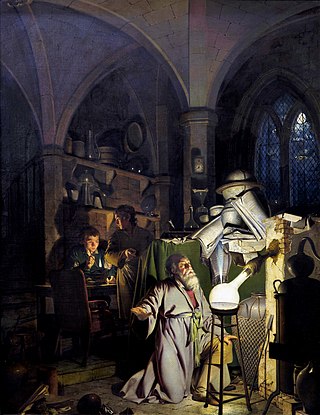
The philosopher's stone is a mythic alchemical substance capable of turning base metals such as mercury into gold or silver. It is also called the elixir of life, useful for rejuvenation and for achieving immortality; for many centuries, it was the most sought-after goal in alchemy. The philosopher's stone was the central symbol of the mystical terminology of alchemy, symbolizing perfection at its finest, divine illumination, and heavenly bliss. Efforts to discover the philosopher's stone were known as the Magnum Opus.

The Monkey King or Sun Wukong is a fictional character best known as one of the main players in the 16th-century Chinese novel Journey to the West, and many later stories and adaptations. In the novel, Sun Wukong is a monkey born from a stone who acquires supernatural powers through Taoist practices. After rebelling against heaven, he is imprisoned under a mountain by the Buddha. After five hundred years, he accompanies the monk Tang Sanzang (唐三藏) riding on the White Dragon Horse and two other disciples, Zhu Bajie and Sha Wujing, on a journey to obtain Buddhist sutras from the West (India), where Buddha and his followers dwell.
The term independent animation refers to animated shorts, web series, and feature films produced outside a major national animation industry.
While the history of animation began much earlier, this article is concerned with the development of the medium after the emergence of celluloid film in 1888, as produced for theatrical screenings, television and (non-interactive) home video.
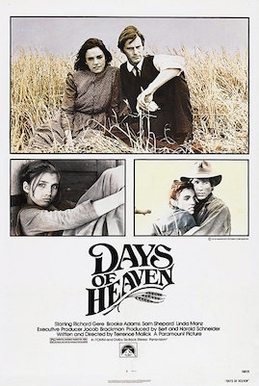
Days of Heaven is a 1978 American romantic period drama film written and directed by Terrence Malick, and starring Richard Gere, Brooke Adams, Sam Shepard and Linda Manz. Set in 1916, it tells the story of Bill and Abby, lovers who travel to the Texas Panhandle to harvest crops for a wealthy farmer. Bill persuades Abby to claim the fortune of the dying farmer by tricking him into a false marriage.

Cutout animation is a form of stop-motion animation using flat characters, props and backgrounds cut from materials such as paper, card, stiff fabric or photographs. The props would be cut out and used as puppets for stop motion. The world's earliest known animated feature films were cutout animations, as is the world's earliest surviving animated feature Die Abenteuer des Prinzen Achmed (1926) by Lotte Reiniger.

Anthology of American Folk Music is a three-album compilation, released in 1952 by Folkways Records, of eighty-four recordings of American folk, blues and country music made and issued from 1926 to 1933 by a variety of performers. The album was compiled from experimental film maker Harry Smith's own personal collection of 78 rpm records.
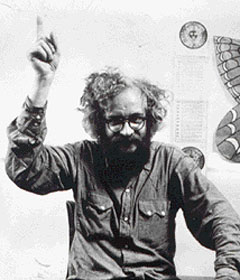
Harry Everett Smith was an American polymath, who was credited variously as an artist, experimental filmmaker, bohemian, mystic, record collector, hoarder, student of anthropology and a Neo-Gnostic bishop.

Melody Time is a 1948 American live-action and animated musical anthology film produced by Walt Disney. It was released to theatres by RKO Radio Pictures on May 27, 1948. Made up of seven segments set to popular music and folk music, the film is, like Make Mine Music before it, the popular music version of Fantasia. Melody Time, while not meeting the artistic accomplishments of Fantasia, was mildly successful.
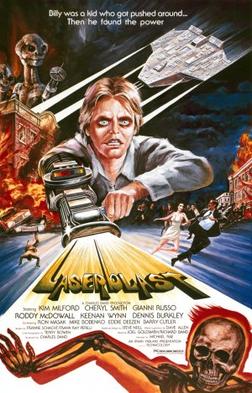
Laserblast is a 1978 American independent science fiction film directed by Michael Rae and produced by Charles Band, widely known for producing B movies. Starring Kim Milford, Cheryl Smith and Gianni Russo, featuring Keenan Wynn and Roddy McDowall, and marking the screen debut of Eddie Deezen, the plot follows an unhappy teenage loner who discovers an alien laser cannon and goes on a murderous rampage, seeking revenge against those who he feels have wronged him.
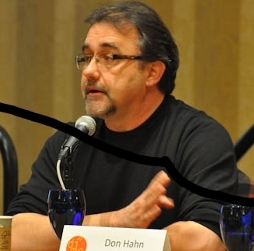
Donald Paul Hahn is an American film producer who is credited with producing some of the most successful animated films in recent history, including Disney’s Beauty and the Beast and The Lion King.
Indiewood films are made outside of the Hollywood studio system or traditional arthouse/independent filmmaking system yet managed to be produced, financed and distributed by the two with varying degrees of success and/or failure.
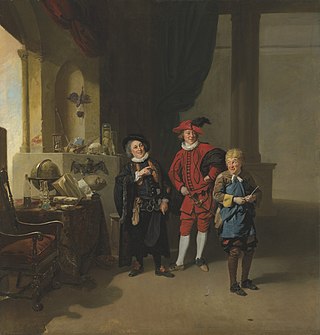
Alchemy has had a long-standing relationship with art, seen both in alchemical texts and in mainstream entertainment. Literary alchemy appears throughout the history of English literature from Shakespeare to modern Fantasy authors. Here, characters or plot structure follow an alchemical magnum opus. In the fourteenth century, Chaucer began a trend of alchemical satire that can still be seen in recent fantasy works like those of Terry Pratchett.
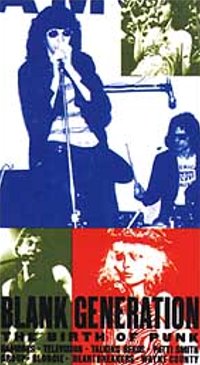
The Blank Generation (1976) is the earliest of the released DIY "home movies" of the 1970s punk rock scene in New York City. It was filmed by No Wave filmmaker Amos Poe and Patti Smith Group member Ivan Kral.

The Sweatbox is a 2002 American documentary film directed by Trudie Styler, which documents the production of the Walt Disney Pictures film The Emperor's New Groove. Utilizing behind-the-scenes footage and interviews, it illustrates the slow and painful transformation of the original version of the film to the finished product, with a focus on Sting's work on the soundtrack. The documentary's major theme is creative-executive conflicts.
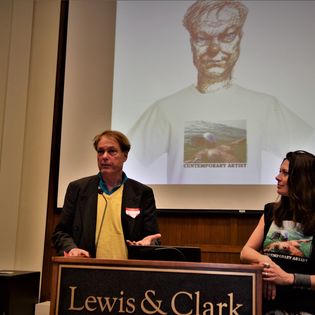
The Oregon Cartoon Institute is located in Portland, Oregon. It was founded in 2007 by Anne Elizabeth Richardson, dedicated to raising awareness of Oregon's rich animation and cartooning history. The OCI has produced projects on Mel Blanc, Harry Smith, Robert Crumb, James Ivory, Pinto Colvig, Lew C. Cook, James Blue, Joan Gratz, Homer Groening, and others. Anne Richardson died on October 14, 2020. The current board is chaired by Katherine Richardson. Members of the board are Laura Berg, Sebastian Heiduschke, Kira Lesley and Ellen Thomas.
Xianxia is a genre of Chinese fantasy heavily inspired by Chinese mythology and influenced by philosophies of Taoism, Chan Buddhism, Chinese martial arts, traditional Chinese medicine, Chinese folk religion, Chinese alchemy, other traditional elements of Chinese culture, and the wuxia genre.
















